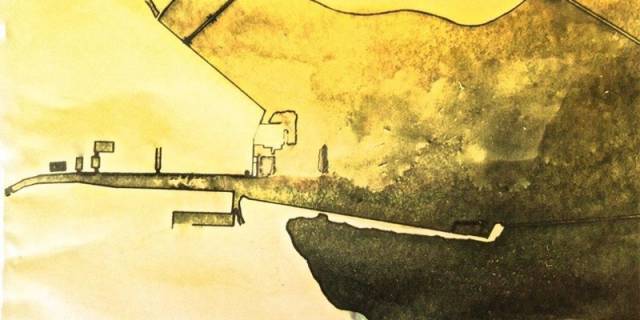#TransitGateway - As part of “Dublin Port Perspectives”, Transit Gateway is a project that documents the transitional changes of the shape of Dublin Port from its medieval shoreline to its current infrastructure. This will be third seminar so far of Transit Gateway Mapping project: Dublin Port from 1786-1866 that is to take place on Wednesday, 26 April.
The free event (to register see below) is to be take place from 18:15 to 20:15 in the Dublin inner city venue of The LAB on Foley Street (off Talbot Street).
The changes of the port as a gateway to the city bring to mind the void of communication of the 18th century on the ships before Marconi, the forced emigrations of the 19th century, the modern context of maritime holiday migration that shaped the 20th century, and which now extends itself to the cruise business the 21st century, and how cargo volumes changed over the centuries in terms of goods, locations and quantity.
Transit Gateway is an artistic mapping cartography that will show the changing connections of the city and the port throughout the years, and how the port as a gateway creates a vital connection of the city with the wider world. In collaboration with partners and the local community, the artist Silvia Loeffler has been commissioned by Dublin Port Company to create a social and collaborative artistic mapping project that looks at the port ‘s transitional phases over a time period of 9 months.
A large-scale installation series loosely based on the various maps used by H.A. Gilligan in his “History of the Port of Dublin” is currently being created, and the works are displayed in the Terminal 1 Building in Dublin Port. Each month, a new map layer will be added to the installation.
Each month, a specific seminar, which will be held in the LAB on Foley Street, in order ‘to bring the port back into the city’, will accompany the map layer.
“Dublin Port from 1786 to 1866 / Structures of Care” is the third seminar in this series. We will refer to the measures, which the newly formed Ballast Board undertook in their function as “the Corporation for Preserving and Improving the Port of Dublin”. John Pidgeon’s House and late 18th century docklands’ everyday life was marked by illegal liquor sales at the South Wall, drunken behaviour at the Lighthouse, and ‘tours of inspection’ down the river. The 19th century became the era of packet and steam ships and the establishment of the port authority’s lifeboat service (1801-62). A multitude of new lighthouses (in 1810 there were ten, whereas in 1867 there were seventy-two) appeared and the construction of the North Bull Wall (1820/21 – 1825) took place, which would – eventually - lead to the appearance of Bull Island as we know it.
As Dublin grew in trade and commerce, additional bridges were built over the Liffey to connect North and South parts of the city to accommodate traffic. The quay walls required constant repair and maintenance, and, in psychological as much as in building terms, care and nurture were required to keep the port machinery operating in connection with the city and its dwellers.
We hope that you are able to join us with the discussion of Dublin Port of this particular era, and how restoration, preservation and care are foundations of both environmental concerns and civic participation.
Speaker panel:
Rob Goodbody (built heritage specialist)
Sophia Meeres (landscape architect)
Tara Kennedy & Jo Anne Butler (artists / architects)
TO REGISTER: The event is free, but places are limited. Please make sure to register by clicking here. This seminar is the third in a series of nine, held over the next months.
The Transit Gateway seminars are part of a wider public engagement programme for Port Perspectives 2017. They are funded by Dublin Port Company and the LAB Gallery.
Dublin Port's 2017 Port Perspectives / Engagement Programme has been developed in collaboration with Dublin City Council, Dublin City Gallery, The Hugh Lane, UCD School of Architecture, National College of Art and Design, Irish Architecture Foundation, Create [the National Collaborative Arts Agency] and Business to Arts.































































